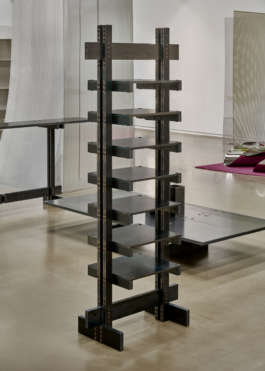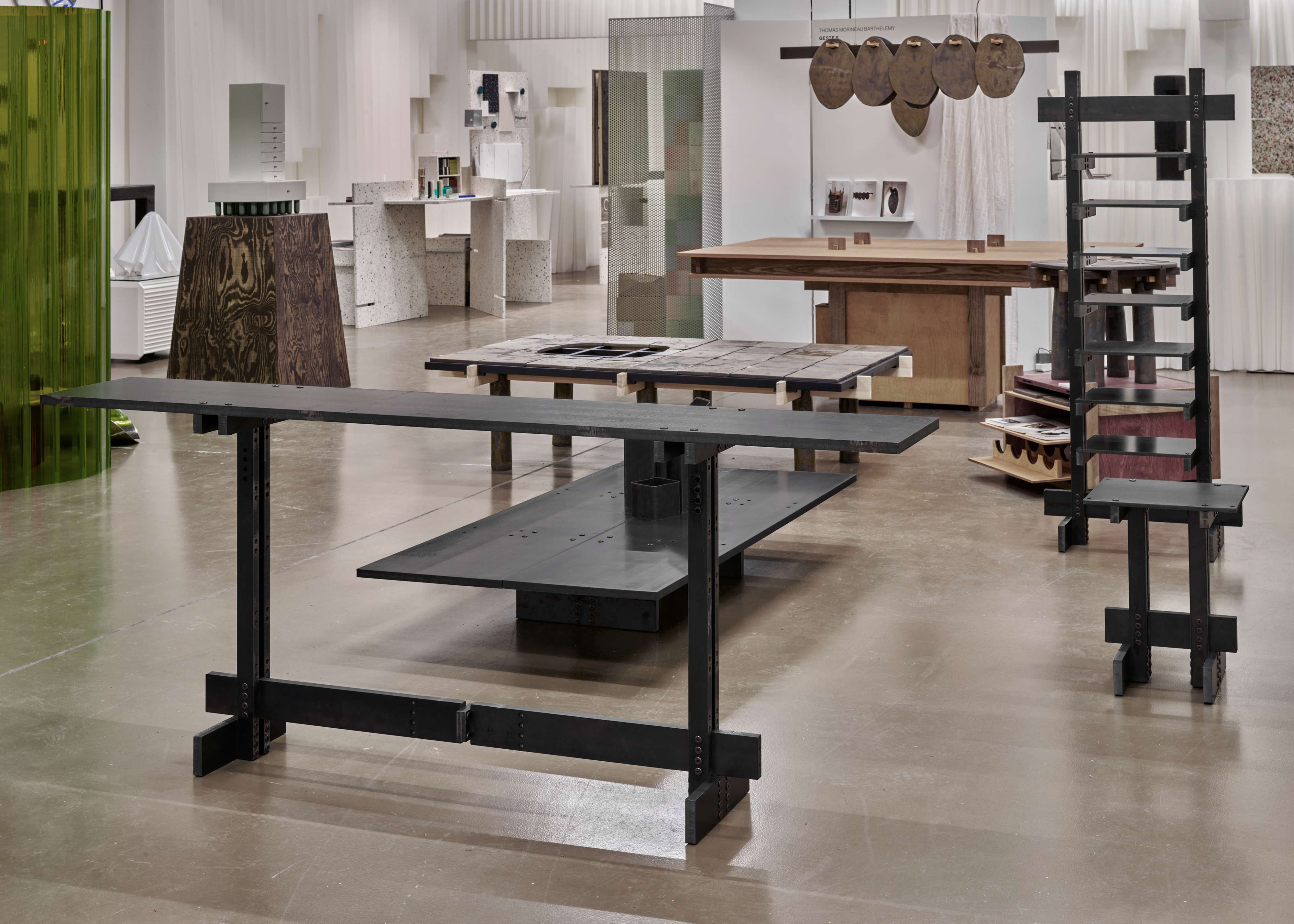



Grou Serra at COLLECTIBLE 2024 © Pim Top
COLLECTIBLE In-Depth
March 2024
This series, COLLECTIBLE In-Depth, unveils the backstage of contemporary creation. Tackling various topics from personal designer processes to the position of collectible design on the global design market, COLLECTIBLE In-Depth offers different views to suit all tastes. Today we speak with Grou Serra.
COLLECTIBLE: What tips would you give to a collector who wishes to start collecting contemporary design?
Grou Serra: Design, and art in general, should be collected mainly for your own pleasure. It’s almost impossible to really think about your own appreciation of a piece without any exterior influence – but this is what collectors should strive for. This in turn will give a rawness and cohesiveness to your collection that wil be completely unique. More people should collect art and design, especially young people. We spend so much on trivial things and very little on art itself – as individuals, not institutions. My tip would be to simply start, and not think too much about it.
C: Who is your mentor and how he influenced your practice?
GS: During my years in Chicago I studied under Arthur Takeuchi, who was one of the greatest living architects at the time. He himself was a pupil of Mies van der Rohe and one of the few people who really understood his work and pushed it forward. The methods he developed on how to study the project are ingrained in my way of doing, and that knowledge is the foundation of everything I do. And I will continue to develop them as much as possible to the best of my ability. His influence has been immense and, quite honestly, very hard to describe.
C: What are the key questions you ask yourself before starting to conceptualize a new piece?
GS: I come from a decidedly baukunst school of thought. A method that was imparted on me and that I carry in every project. It’s quite rigorous and usually, with the same starting parameters you arrive at a very similar result, no matter what. A very logical and methodological process. The questions are of material, scale, construction, space and proportion. These are the fundamental questions for any work that I start – whether in architecture or in design. Very little else really matters and I believe is unnecessary for a good project.
C: Where do you take your inspiration from?
GS: The true impetus for work is work. I find the notion of inspiration to be a dangerous one because it supposes its necessity for the production of good work – inspired work. And therefore, also justifies the lack of work by the lack of inspiration. I have found that the only way to produce good design is to first and foremost produce things, and by doing so, you will connect the dots and understand so much more than by thinking about it – or even worse, waiting for inspiration to come. As John Cage put it : the only rule is work.
C: How do sustainability-related questions influence your practice?
GS: I think too often we focus on the wrong questions when dealing with sustainability. As an architect we constantly work with these issues, but in a very bureaucratic way, that seems completely disconnected from reality. The situation is quite dire yet we are surrounded by either unfounded optimism or downright denial. We should be asking ourselves how we will live with energy quotas or lack of running water, because this is unavoidable - but most people are asking the wrong question; the most sustainable architecture is the wool sweater you wear. I try as much as I can to be mindful of this reality.

Grou Serra at COLLECTIBLE 2024 © Pim Top

Grou Serra at COLLECTIBLE 2024 © Pim Top
COLLECTIBLE In-Depth
March 2024

Grou Serra at COLLECTIBLE 2024 © Pim Top
This series, COLLECTIBLE In-Depth, unveils the backstage of contemporary creation. Tackling various topics from personal designer processes to the position of collectible design on the global design market, COLLECTIBLE In-Depth offers different views to suit all tastes. Today we speak with Grou Serra.
COLLECTIBLE: What tips would you give to a collector who wishes to start collecting contemporary design?
Grou Serra: Design, and art in general, should be collected mainly for your own pleasure. It’s almost impossible to really think about your own appreciation of a piece without any exterior influence – but this is what collectors should strive for. This in turn will give a rawness and cohesiveness to your collection that wil be completely unique. More people should collect art and design, especially young people. We spend so much on trivial things and very little on art itself – as individuals, not institutions. My tip would be to simply start, and not think too much about it.
C: Who is your mentor and how he influenced your practice?
GS: During my years in Chicago I studied under Arthur Takeuchi, who was one of the greatest living architects at the time. He himself was a pupil of Mies van der Rohe and one of the few people who really understood his work and pushed it forward. The methods he developed on how to study the project are ingrained in my way of doing, and that knowledge is the foundation of everything I do. And I will continue to develop them as much as possible to the best of my ability. His influence has been immense and, quite honestly, very hard to describe.
C: What are the key questions you ask yourself before starting to conceptualize a new piece?
GS: I come from a decidedly baukunst school of thought. A method that was imparted on me and that I carry in every project. It’s quite rigorous and usually, with the same starting parameters you arrive at a very similar result, no matter what. A very logical and methodological process. The questions are of material, scale, construction, space and proportion. These are the fundamental questions for any work that I start – whether in architecture or in design. Very little else really matters and I believe is unnecessary for a good project.
C: Where do you take your inspiration from?
GS: The true impetus for work is work. I find the notion of inspiration to be a dangerous one because it supposes its necessity for the production of good work – inspired work. And therefore, also justifies the lack of work by the lack of inspiration. I have found that the only way to produce good design is to first and foremost produce things, and by doing so, you will connect the dots and understand so much more than by thinking about it – or even worse, waiting for inspiration to come. As John Cage put it : the only rule is work.
C: How do sustainability-related questions influence your practice?
GS: I think too often we focus on the wrong questions when dealing with sustainability. As an architect we constantly work with these issues, but in a very bureaucratic way, that seems completely disconnected from reality. The situation is quite dire yet we are surrounded by either unfounded optimism or downright denial. We should be asking ourselves how we will live with energy quotas or lack of running water, because this is unavoidable - but most people are asking the wrong question; the most sustainable architecture is the wool sweater you wear. I try as much as I can to be mindful of this reality.

Grou Serra at COLLECTIBLE 2024 © Pim Top

Grou Serra at COLLECTIBLE 2024 © Pim Top
Contact
info@collectible.design
VIP PORTAL
EXHIBITOR PORTAL
PRIVACY POLICY
© 2025 Collectible
Contact
info@collectible.design
VIP PORTAL
EXHIBITOR PORTAL
PRIVACY POLICY
© 2025 Collectible